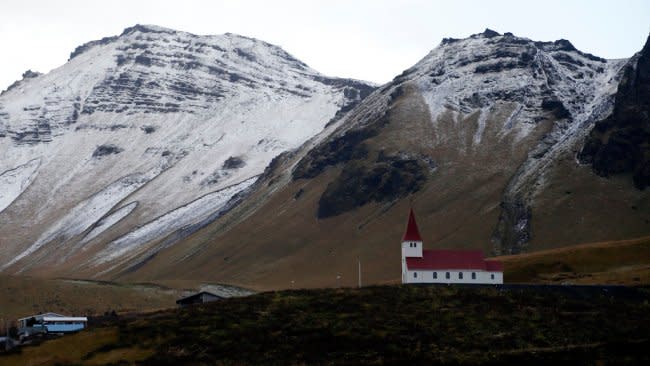Nearly constant earthquakes have hit Iceland’s main population center in recent days, and officials warn that this could be a sign of an imminent volcanic eruption.
Iceland is no stranger to seismic activity, as the island was formed by volcanic activity due to the spread of tectonic plates in North America and Eurasia. Iceland is home to volcanoes, geysers, hot springs, lava fields and occasional earthquakes.
However, the islands are experiencing unusual seismic activity, with more than 18,000 earthquakes occurring in the past week. According to the United States Geological Survey (USGS), a series of small earthquakes with an identifiable main shock is considered a swarm and can be short-lived or continue for days, months or years.
2/2
Turbulence and seismic activity decreased in the middle of the night, but increased again at around 05:00.
Biggest earthquakes since midnight:
00:59 M4.1 in Fagradalsfjall
04:04 M3.6
05:17 M3.9
05:56 M3.9
05:44 M4.0
15-20 magnitude 3 earthquakes detected since midnight. pic.twitter.com/BTemiechzb– Icelandic Meteorological Office – IMO (@Vedurstofan) March 4, 2021
Earthquakes in a swarm occur in approximately the same area and are associated with geothermal activity.
Most earthquakes occurred in the Southern Peninsula, or Reykjanes region, located south of the capital, Reykjavik. About two-thirds of Iceland’s population lives in Reykjavik and the surrounding cities.
CLICK HERE FOR THE FREE ACCUWEATHER APP
Residents told CNN that, although they are used to earthquakes in the area, the almost constant quake has been disturbing.
Most earthquakes had a magnitude of 3.0 or less on the Richter scale. However, the biggest tremors reached a magnitude of 5.2 on February 27 and 5.6 on February 24.
In addition to some road cracks and rock falls on steep slopes near the epicenter of the swarm reported by the Icelandic Roads and Coastal Administration, very little damage was caused by the frequent earthquakes, CNN reported.
 |
|
In this archive photo from October 26, 2016, the church of Vik, Iceland, near Katla Volcano. (AP Photo / Frank Augstein, Archive) |
Local experts with whom CNN spoke about the long period of seismic activity said public concerns made sense. “Of course it worries people,” Þorvaldur Þórðarson, a professor of volcanology at the University of Iceland, told CNN. “For this region, this is quite unusual, not because of the type of earthquakes or their intensity, but because of their duration. It has been going on for more than a week.”
Þórðarson went on to say that the frequent earthquakes are likely due to an intrusion of magma into the earth’s crust in the Reykjanes region and that authorities are trying to find out if the magma is moving even closer to the surface.
There are several volcanoes located along this southwestern peninsula, including Mount Keilir, which is located about 20 miles south of Reykjavik, and local authorities have warned that an eruption could be imminent.
“We are not saying that we have signs that an eruption has started,” Kristín Jónsdóttir, an official with the Icelandic Meteorological Office, told local media. “But that looks like the kind of activity we expect in the run-up to an eruption.”
According to The Guardian, authorities announced that residents were in no immediate danger, but travel to the peninsula should be avoided.
The authorities also said that this would be the first eruption in this region of Iceland since the 12th century, according to The Guardian.
Fear of an eruption arises during an active period of volcanoes in other parts of the world. Both Mount Etna in Italy and Mount Sinabung in Indonesia have been particularly active in recent weeks. Each volcano sent huge clouds of ash into the sky this week, leaving villages in both countries covered with ash.
No injuries or deaths have been reported as a result of any eruptions, but air travel has been affected for a period of time in the Sicily region of Italy, where the volcano is located.
Keep going to AccuWeather.com and stay tuned to AccuWeather Network on DirecTV, Frontier, Spectrum, Fubo and Verizon Fios.
